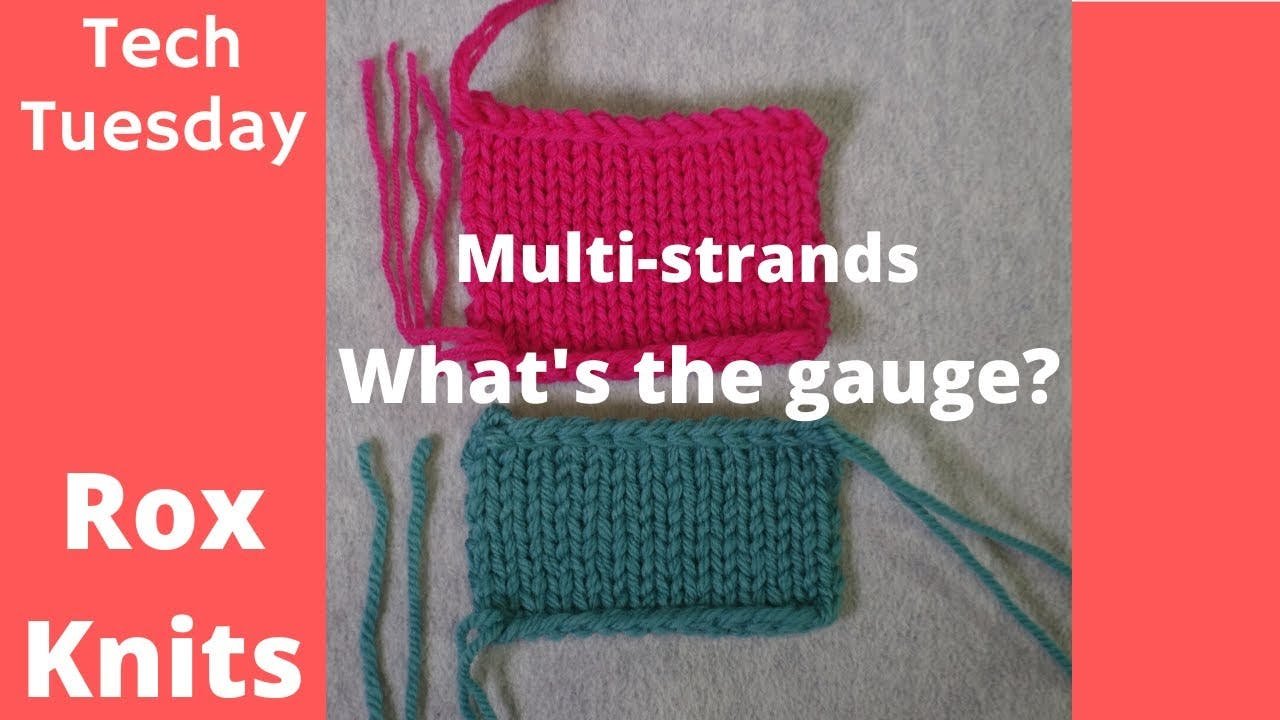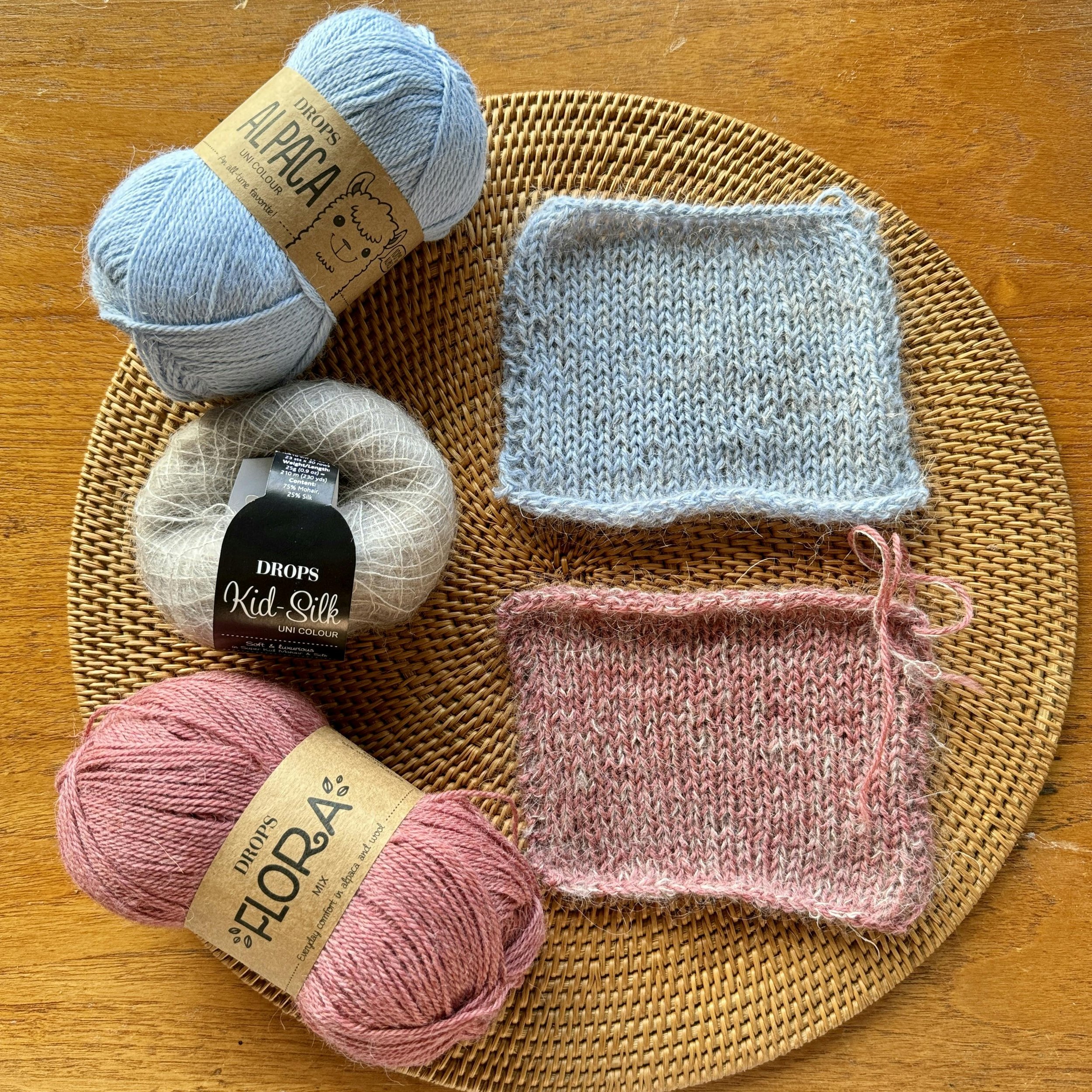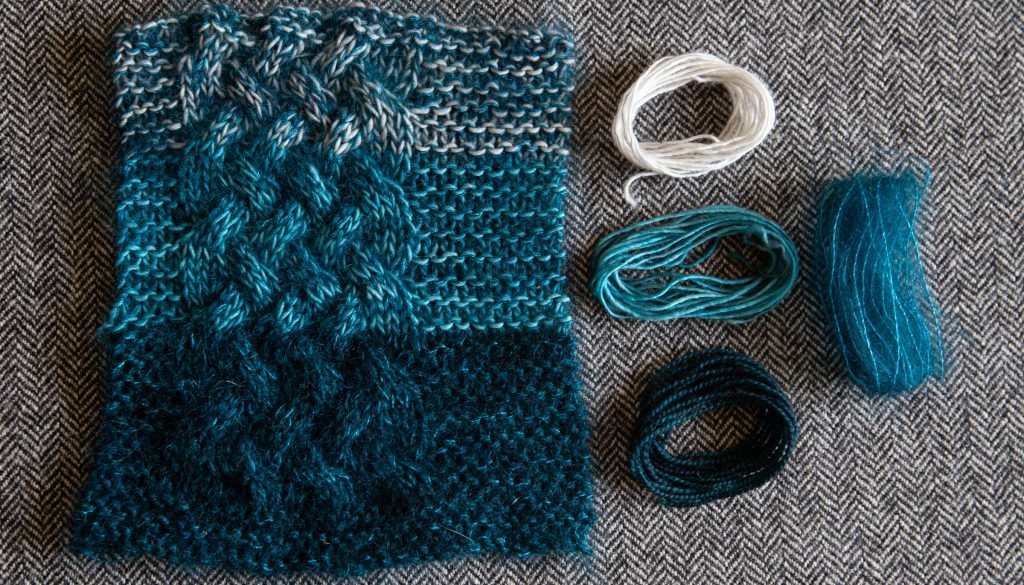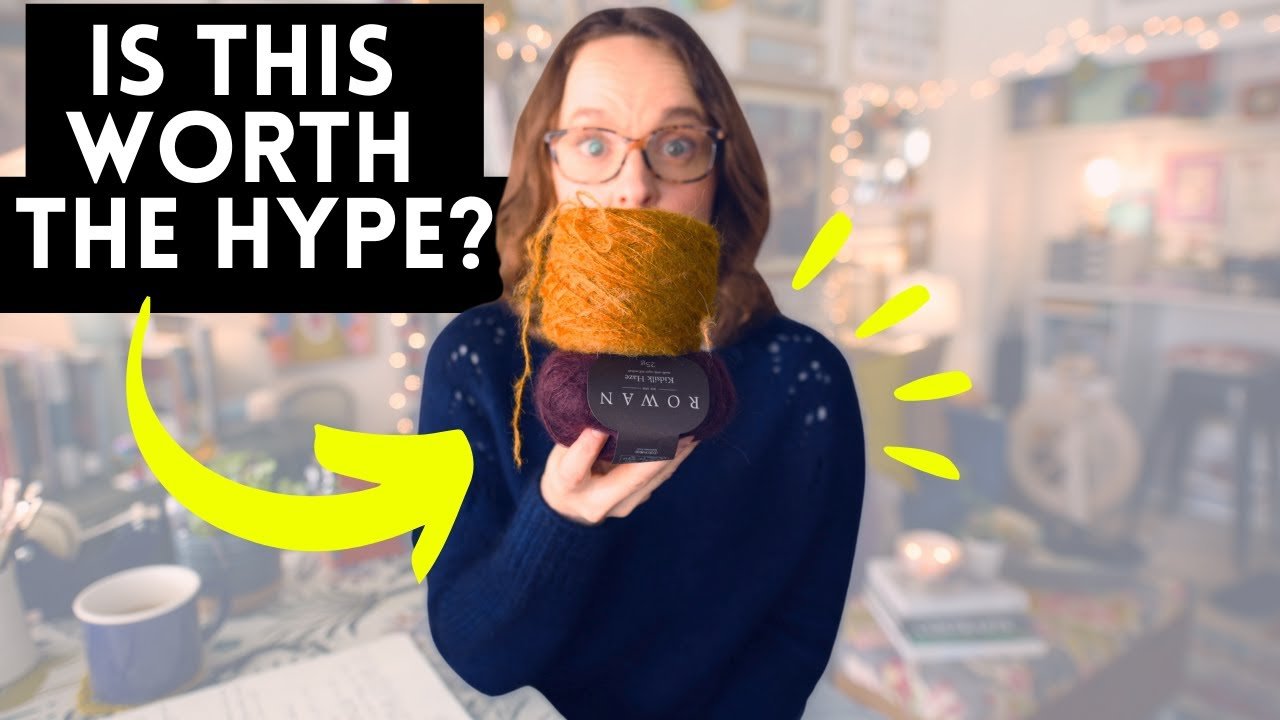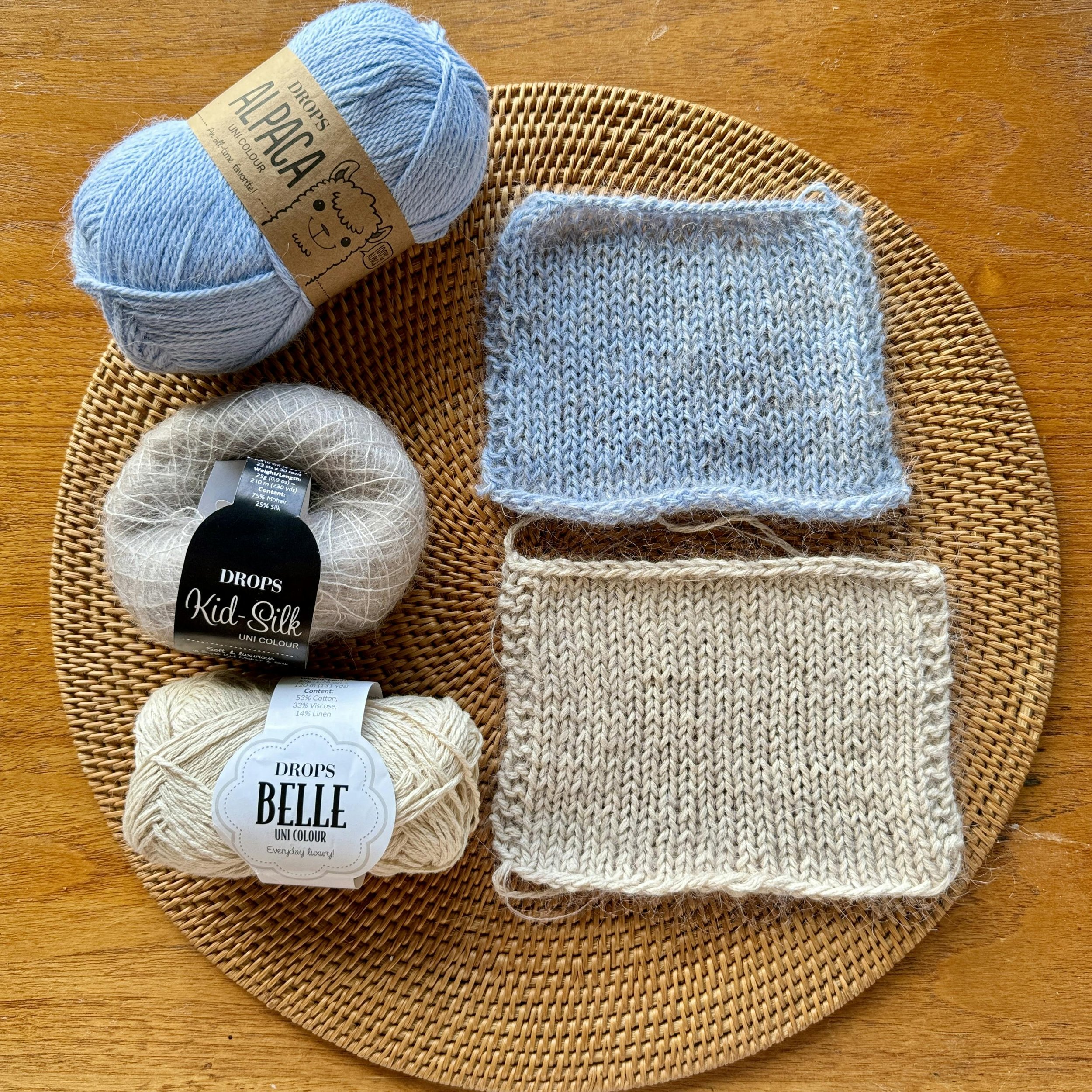Guide to combining yarns with mohair: Tips and ideas.
Hello!
I hope you’re feeling inspired and ready for the cozy knitting season ahead! 🍂
With the upcoming release of the Drop in Dream sweater pattern, I'm also updating my Aran weight yarn guide to include new creative options like blown yarn and knitting with two strands — combining a base yarn with a mohair.
In this Esenote, I’ll share some essential tips for knitting with two strands when one of them is kid mohair. This guide will be a bit longer because I plan to save it as a resource on my website. I often find myself referring back to these notes, so I want them to be handy and easy to find! I’ll also be adding keywords for easy searching and will let you know once all the Esenotes are available online.
Ready to dive in? We’ll start with a little bit of math (don’t worry, it’s simple and useful!), followed by two great videos and an Instagram account full of inspiration.
1. When the pattern calls for 2 strands, but you prefer one.
Many popular patterns are designed with two strands held together — often a merino yarn with a fingering-weight yarn, like kid mohair. This creates a fluffy, airy feel that’s lighter than regular wool. But keep in mind, using two strands can cost more since you’ll need the same yardage of both the base yarn and kid mohair.
Tip: If you love the pattern but don’t want to spend extra on two yarns, or if you prefer a different texture,you can substitute with a thicker single yarn.
For example, the Iben Sweater I featured last week has a gauge of 20 stitches and 30 rows = 10 cm in stockinette stitch. You can substitute this with any yarn that matches the gauge, such as a DK weight yarn.
Combine the weight and length of both yarns recommended in the pattern:
Isager Yarn Silk Mohair: 232 yards (212 meters) in 25 grams.
Camilla Vad Lambswool: 246 yards (225 meters) in 50 grams.
Together, they create a combined yarn with 232 yards (212 meters) per 75 grams, or 154 yards (141 meters) per 50 grams. While Drops doesn't offer an exact match, you experiment with finer yarns like Drops Alpaca or Drops Nord. I suggest knitting a swatch first or exploring other brands to find the best match.
2. When the pattern calls for one strand, but you want to add mohair.
If the pattern is designed for one strand — like the Mellow Mood Sweater (Aran weight, gauge of 16 stitches x 22 rows) — you can substitute with a thinner base yarn and add kid mohair.
Generally, adding kid mohair increases the yarn weight by one category:
Lace weight + mohair = Sport
Fingering + mohair = DK
Sport + mohair = Worsted
DK + mohair = Aran
Worsted + mohair = Bulky
For a more accurate estimation, use this formula:
(Gauge of Yarn 1 + Gauge of Yarn 2) / 2 * 0.7
Example:
Drops Air (color 36). Drops Alpaca (color 6206) with Drops Kid silk (color 20).
Drops Lima (Worsted, 21 sts per 10 cm) + Drops Kid Silk (Fingering, 23 sts per 10 cm).
Formula: (21 + 23) / 2 * 0.7 = 15.4, rounded to 15 sts.
Combining these two would create a bulky yarn, which doesn't match the gauge for the Mellow Mood Sweater.
You could try a smaller needle, but a different yarn combination might work better.
Another example:
Drops Alpaca (Sport, 24 sts per 10 cm) + Drops Kid Silk (Fingering, 23 sts per 10 cm).
Formula: (24 + 23) / 2 * 0.7 = 16.45, rounded to 16 sts.
This combination creates an Aran weight yarn with a lightweight, airy fabric, opening up new color possibilities! My gauge with this combination was 16.5 sts x 24 rows — almost perfect! The fabric is similar to Drops Air: light and soft, but with more even stitches. I'll definitely use this combo for my next Aran weight project.(For the curious: Drops Air feels less itchy, less fuzzy, and softer overall.)
🎬 I recommend checking out Roxanne Richardson's video: "Combining Yarns and Calculating Gauge"! Roxanne makes it easy to understand how to combine multiple strands of yarn (even 3 or 4!) to create the perfect texture. She also shares valuable tips on selecting the ideal needle size for your custom yarn blend.
However, these formulas don’t always work. For example, I tried using Drops Flora, which has the same gauge on the label as Drops Alpaca (24 sts per 10 cm), but with a different meterage (210 m per 50 g compared to Drops Alpaca's 167 m per 50 g). I suspected it wouldn’t be a good match, and I was right.
Drops Alpaca (color 6206) and Drops Flora (color 24) with Drops Kid silk (color 20).
When I combined Drops Flora with Drops Kid Silk, and knitted a swatch with 5.5 mm (US 9) needles, I ended up with a loose fabric with a gauge of 18 sts per 10 cm, whereas Drops Alpaca combined with Kid Silk gave me 16 sts per 10 cm.
Tip: Always buy a single skein for a swatch first. If you're happy with the result, then buy the amount you need for your project.
3. Get creative with unique colors.
If you’re like me, you might feel limited by the color options of some yarns (I love Drops Nepal for its affordability, but I always want more shades!). Here's a fun solution: choose a thinner base yarn in your desired color, and pair it with mohair in a different shade to achieve your perfect hue! For instance, if you want to soften a light blue, mix it with a gray kid mohair.
Want to dive deeper? Check out these fantastic resources:
📝 Tin Can Knits' tutorial "Layering with Mohair". This comprehensive guide unlocks the secrets of combining lace-weight mohair with other yarns.
Learn how to achieve stunning, painterly effects and create truly unique projects!
📺 Wool Needle Hands video: "Mohair Yarn: Is it Worth the Hype?" This video explores the wonders of mohair! Discover its versatility and learn how to pair it with other yarns to create unique textures.
You'll even gain insights into Suri Alpaca yarn as well!
📺 Another video by Wool Needle Hands: "Tips from the Dyeing Studio #6: Choosing a Good Mohair Yarn Pairing".
Tayler will share how solid mohair can impact variegated yarns and how to choose the perfect color combinations.
By exploring these resources, you'll gain a deeper understanding of how to use kid mohair creatively and confidently.
🎨 For inspiration: Not sure about your color choices? Head over to the Knitting for Olive Instagram (@knittingforolive).
They do an excellent job showing how different base yarns pair beautifully with various colors of kid mohair, offering plenty of creative ideas.
Their Reels are a treasure trove of inspiration, featuring their kid mohair in over 80 stunning colors.
If you’re looking for a more budget-friendly option, Drops Kid Silk, available in 56 colors, is a great alternative.
Things to consider:
Skill Level: Mohair can be a bit trickier to work with than other yarns. It's more difficult to unravel, and each attempt can potentially damage the yarn. If you're new to knitting or want to avoid frustration, consider knitting a sweater with a single strand first to test the pattern. Then, once you're comfortable, incorporate mohair for the second sample.
Drops Alpaca (color 6206) and Drops Belle (color 03) with Drops Kid Silk (color 20).
2. Warmth: Mohair is a naturally warm fiber. While it's often recommended to use a plant-based yarn as the base for a lighter fabric, my experiment with Drops Belle and Drops Kid Silk produced an Aran weight yarn that felt surprisingly heavy. This was significantly heavier than my swatch with Drops Alpaca and Kid Mohair.
This highlights the importance of considering yarn weight and blend when combining mohair with other fibers.
Remember, the beauty of knitting lies in the endless possibilities. So, don't be afraid to experiment and let your creativity soar!
❤️ I hope this Esenote was useful and inspiring.
Warm regards,
Julia Piro
Knitwear Designer & Esenotes Curator
P.S. Looking for even more inspiration? Follow me on Instagram or Facebook!


